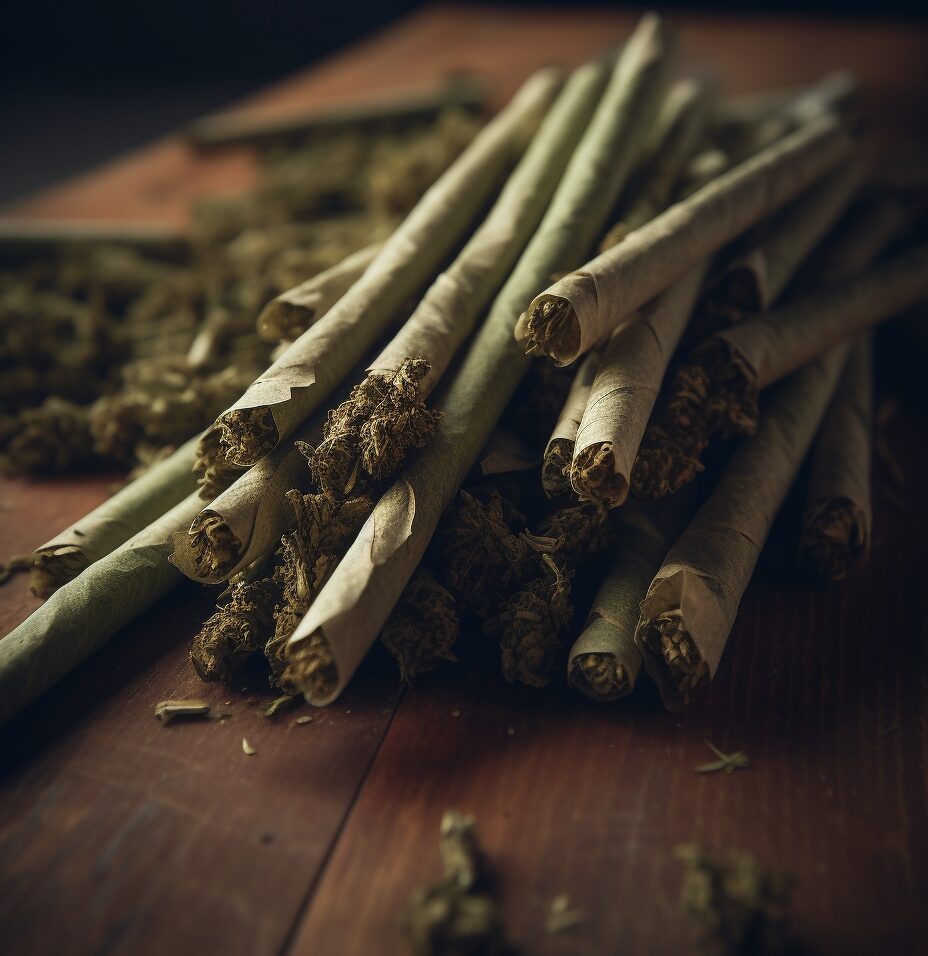Most of us wouldn’t think twice about picking up a pre-roll and lighting it up like a Christmas tree. Have you ever considered what exactly it is you’re lighting up? In my 10 years of cannabis consumption, I can’t say I’ve ever given it much thought.
If you’ve ever been into a head shop then you’re no stranger to the fact that there is a different paper for everything. Mini cones, Kings Size, 1 1/4, bleached, unbleached, flavored, or color-coded, the options are endless—so endless it’s impossible to know where to begin. For those newer to the plant this can be incredibly overwhelming and the goal is to medicate not agitate. Allow me to be your guide and demystify the world of rolling papers.
What are you made of?
When it comes to what makes up a rolling paper, the answer is relatively simple: wood, rice, or hemp. These are the most common types you’ll encounter. What’s the difference? That my dear comes down to the burn. Wood pulp papers will be thicker and tend to burn slower while rice and hemp (the 2blindhippie choice) are thinner and tend to burn faster. Some companies do choose to blend some combo of options to create a hybrid paper. Both rice and hemp papers are offered in the 2blind Hippie store, those two are a great starting place if you’re inexperienced.
The only option that comes naturally white is rice paper; the others typically come in bleach and unbleached options. What’s with the bleach anyway? Besides removing the color it also affects how it burns, there are some suggestions that it makes for a stronger paper. Unfortunately, a quick Google search doesn’t turn up much but a bunch of fear-mongering-type posts. The validity of why we bleach the papers in the first place is still beyond me. Especially, when rice papers are available.
To Roll Or Not To Roll?
Once we get past what they are made of there is yet another decision to make. To roll or not to roll? Cones aren’t some magical tool unless like me your fingers simply can’t be fingers when it comes time to roll. Glass isn’t always a great or convenient option, and just simply rolling one up would take an act of god. That’s where cones come in—-they are the same papers pre-shaped for you with a crutch. Lucky for you 2BlindHippie has both rice and organic hemp cones available and as far as cones go those two options are all you need.
So, does it make a difference?

Well ultimately no you’re still smoking either way. But, if you give it a wider lens there’s a key difference and that is accessibility. Not everyone can hand roll but I envy those who can. If I was dependent on my ability to hand roll I would be forever unmedicated and pissed off. Cones are just a modified way for me to enjoy the convenience of a pre-roll without the frustration of hand rolling. 2blind hippie gets it and offers packs of cones in a tube for safe keeping because no one likes crushed cones..
Size Does In Fact Matter
This is in my opinion the most important part of picking papers. Why? Because size absolutely matters! I’m not going to need the same amount for one person as I would for three people. When you’re talking about cones there are three most common sizes: Minis(.75g-), 1g, and king size ( 1g+). For the most part, these are what you’ll see and for the average consumer, this is perfect.
Minis are great for the casual consumer, entry-level stoners, or if you’re just trying to be more conscious about your consumption. 1g is what I’d call standard, most cones are roughly this size, and most pre-roll you get from a dispo will be this size. For heavier consumers, this may still be a solo venture but can still be passed around with a friend or two. King size is meant for sharing, it’s typically over 1g and can be a little more difficult to pack consistently but great when the group is a little bigger.
When we flip the script over to papers it’s a similar story. You have single wide, 1 ¼, and king size. Most of us are familiar with those sizes but when it comes to hand rolling single wide or the trusty 1 ¼ will be the easiest to handle. If you use a rolling machine make sure your paper will fit the machine you are using. Not all papers come with crutches, this isn’t the end of the world but if you like the support then it’s something to take note of.
Ready For A Puff?
When it comes to papers the options can be mind-numbing and confusing at best. When we are talking about consuming medicine it makes sense that we would care to know what we are inhaling when we spark up that joint. Does any of this matter though? The short answer is kind of. For the occasional user, they probably won’t notice much of a difference from one sesh to the next. For those of us who consume all day every day and cannabis is just a way of life the difference is a little more apparent.
The paper itself will help control how fast or slow your joint burns, you may notice a difference in the flavor profile of your flower between rice and wood pulp paper. The biggest difference is between bleached and unbleached papers, to air on the side of caution it’s best to avoid bleached papers whenever possible. If you’re looking to add papers to your stash 2Blind Hippie is a good place to start. This is by no means an exhaustive guide on all the options but it gives you the basics to start enjoying a dose of plant medicine.



